Block Memory Generator v8.3
Table of Contents
IP Facts
Ch. 1: Overview
Feature Summary
Features Common to the Native Interface and AXI4 BMG Cores
Native Block Memory Generator Specific Features
AXI4 Interface Block Memory Generator Specific Features
Native Block Memory Generator Feature Summary
Memory Types
Selectable Memory Algorithm
Configurable Width and Depth
Selectable Operating Mode per Port
Selectable Port Aspect Ratios
Optional Byte-Write Enable
Optional Output Registers
Optional Pipeline Stages
Optional Enable Pin
Optional Set/Reset Pin
Memory Initialization
Hamming Error Correction Capability
AXI4 Interface Block Memory Generator Feature Summary
Overview
Applications
AXI4 Block Memories–Memory Slave Mode
AXI4-Lite Block Memories–Memory Slave Mode
AXI4 Block Memories–Peripheral Slave Mode
AXI4-Lite Block Memories–Peripheral Slave Mode
AXI4 BMG Core Channel Handshake Sequence
AXI4-Lite Single Burst Transactions
AXI4 Incremental Burst Support
AXI4 Wrap Burst Support
AXI4 Narrow Transactions
AXI4 Unaligned Transactions
Configurable Width and Depth
AXI4 Interface Block Memory Addressing
Throughput and Performance
Selectable Port Aspect Ratios
Optional Output Register
Optional Pipeline Stages
Memory Initialization Capability
Applications
Licensing and Ordering Information
Ch. 2: Product Specification
Performance
Resource Utilization
Latency
Port Descriptions
Native Block Memory Generator Signals
AXI4 Interface Block Memory Generator Signals
AXI4 Interface - Global Signals
AXI4-Interface Signals
AXI4-Lite Interface Signals
Ch. 3: Designing with the Core
General Design Guidelines
Memory Type
Selectable Memory Algorithm
Minimum Area Algorithm
Low Power Algorithm
Fixed Primitive Algorithm
Selectable Width and Depth
Operating Mode
Data Width Aspect Ratios
Port Aspect Ratios
Port Aspect Ratio Example
Read-to-Write Aspect Ratios
Aspect Ratio Limitations
Byte-Writes
Byte-Write Example
Write First Mode Considerations
Collision Behavior
Collisions and Asynchronous Clocks: General Guidelines
Collisions and Synchronous Clocks: General Guidelines
Collisions and Simple Dual-port RAM
Additional Memory Collision Restrictions: Address Space Overlap
Optional Output Registers
Optional Pipeline Stages
Optional Register Clock Enable Pins
Optional Set/Reset Pins
Memory Output Flow Control
Read Data and Read Enable Latency
Reset Priority
Special Reset Behavior
Controlling Reset Operations
Built-in Error Correction Capability and Error Injection
Error Injection
Soft Error Correction Capability and Error injection
Overview
Details
Timing Diagrams
Device Utilization and Performance Benchmarks
Lower Data Widths in SDP Configurations
UltraScale Architecture-Based Device Features
Standard DOUT Block RAM Cascading
Pipe Line Register Addition in the Built ECC Mode
Clocking
Resets
Ch. 4: Design Flow Steps
Customizing and Generating the Core
Native Block Memory Generator Basic Tab
Port Options Tab
Other Options Tab
Specifying Initial Memory Contents
Summary Tab
Power Estimate Options Tab
Block RAM Usage
LUT Utilization and Performance
Generating the AXI4 Interface Block Memory Generator Core
Basic Tab
AXI4 Tab
Customizing the Core with IP Integrator
User Parameters
Constraining the Core
Simulation
Synthesis and Implementation
Ch. 5: Detailed Example Design
Ch. 6: Test Bench
Core with Native Interface
Core with AXI4 Interface
Messages and Warnings
Appx. A: Verification, Compliance, and Interoperability
Simulation
Appx. B: Migrating and Upgrading
Migrating to the Vivado Design Suite
Upgrading in the Vivado Design Suite
Auto Upgrade Feature
Appx. C: Debugging
Finding Help on Xilinx.com
Documentation
Answer Records
Technical Support
Debug Tools
Vivado Design Suite Debug Feature
Simulation Debug
Hardware Debug
General Checks
Appx. D: Native Block Memory Generator Supplemental Information
Low Power Designs
Native Block Memory Generator SIM Parameters
AXI4 Interface Block Memory Generator SIM Parameters
Output Register Configurations
Memory with Primitive and Core Output Registers
Memory with Primitive Output Registers and without Special Reset Behavior Option
Memory with Primitive Output Registers and with Special Reset Behavior Option
Memory with Core Output Registers
Memory with No Output Registers
Appx. E: Additional Resources and Legal Notices
Xilinx Resources
References
Revision History
Please Read: Important Legal Notices
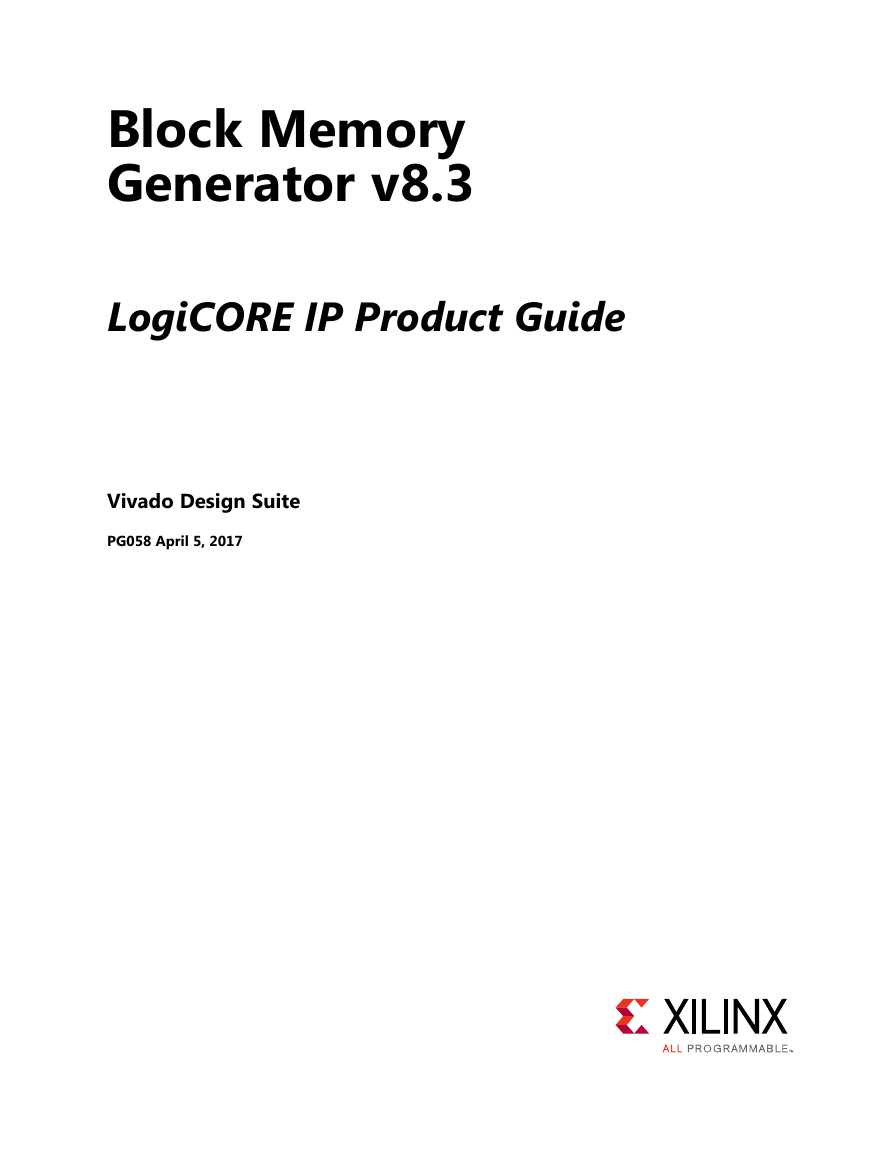

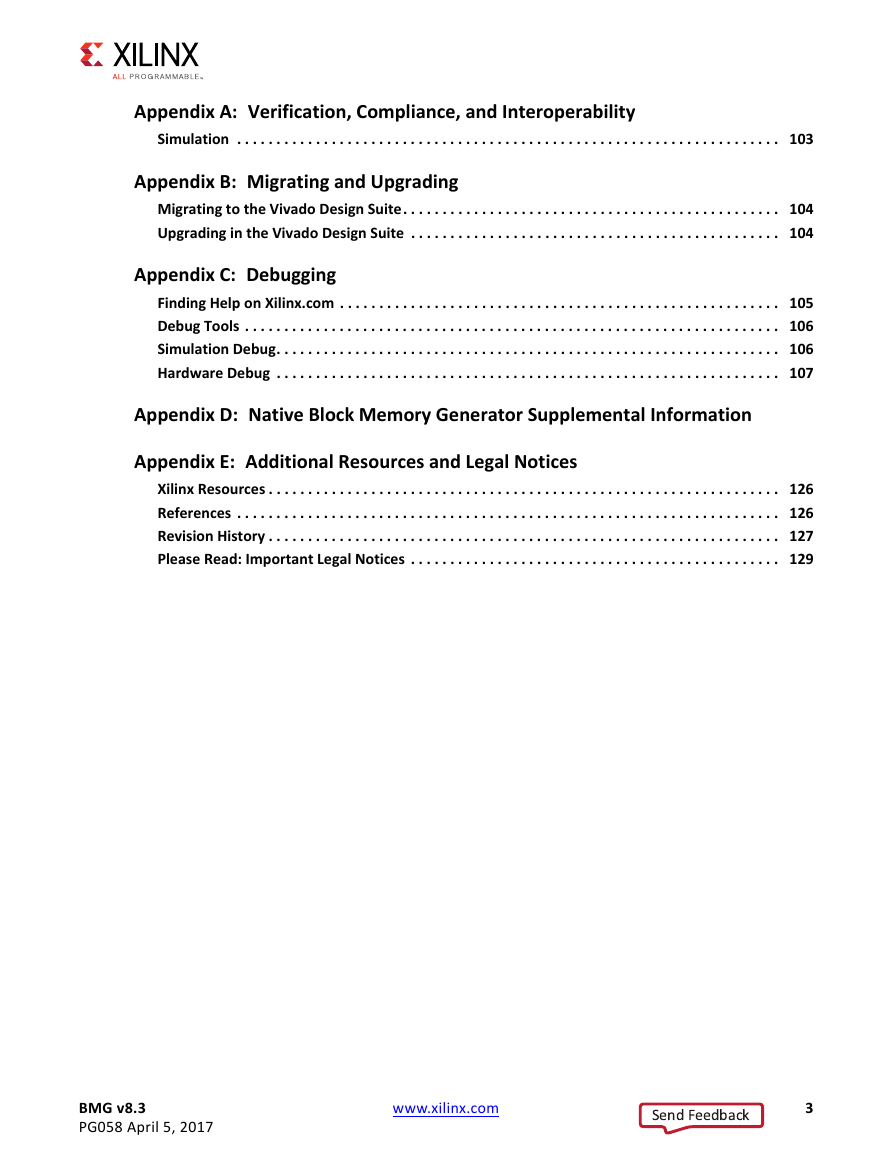

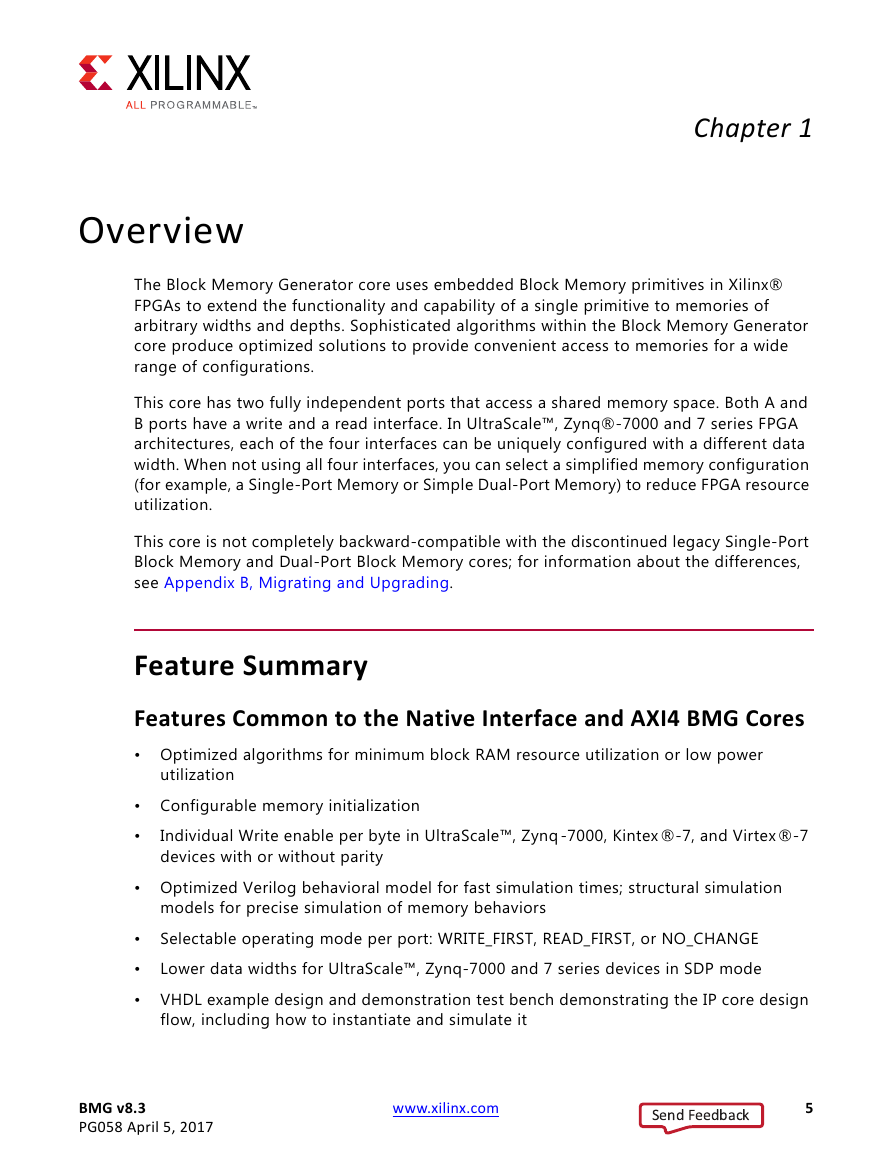

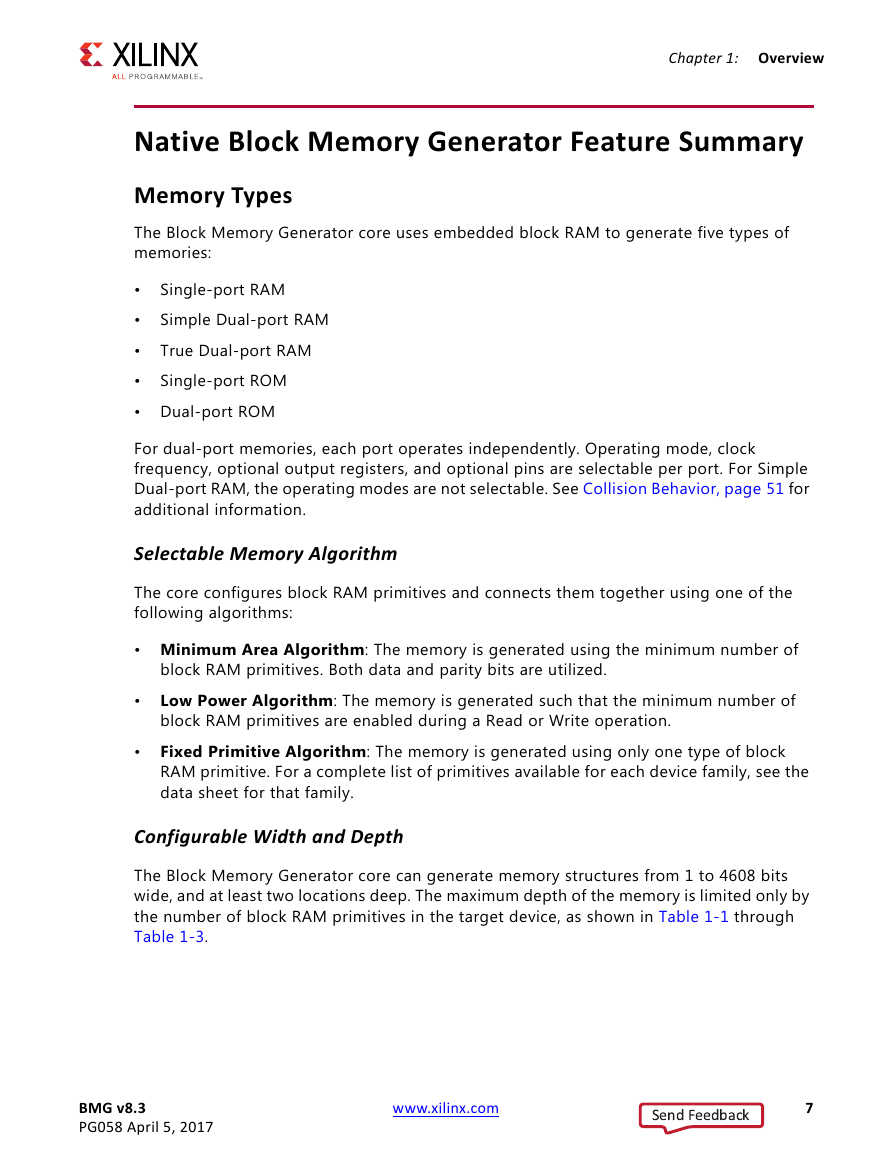
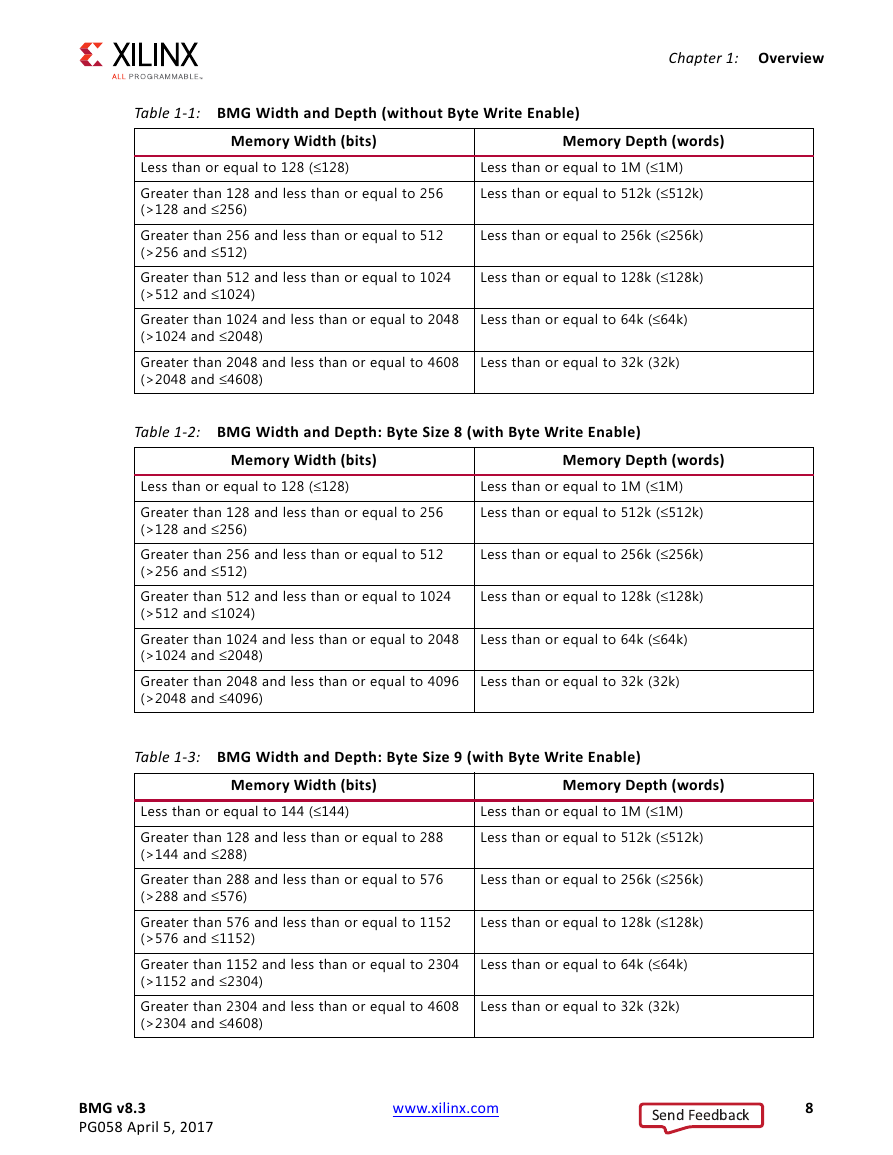








 2023年江西萍乡中考道德与法治真题及答案.doc
2023年江西萍乡中考道德与法治真题及答案.doc 2012年重庆南川中考生物真题及答案.doc
2012年重庆南川中考生物真题及答案.doc 2013年江西师范大学地理学综合及文艺理论基础考研真题.doc
2013年江西师范大学地理学综合及文艺理论基础考研真题.doc 2020年四川甘孜小升初语文真题及答案I卷.doc
2020年四川甘孜小升初语文真题及答案I卷.doc 2020年注册岩土工程师专业基础考试真题及答案.doc
2020年注册岩土工程师专业基础考试真题及答案.doc 2023-2024学年福建省厦门市九年级上学期数学月考试题及答案.doc
2023-2024学年福建省厦门市九年级上学期数学月考试题及答案.doc 2021-2022学年辽宁省沈阳市大东区九年级上学期语文期末试题及答案.doc
2021-2022学年辽宁省沈阳市大东区九年级上学期语文期末试题及答案.doc 2022-2023学年北京东城区初三第一学期物理期末试卷及答案.doc
2022-2023学年北京东城区初三第一学期物理期末试卷及答案.doc 2018上半年江西教师资格初中地理学科知识与教学能力真题及答案.doc
2018上半年江西教师资格初中地理学科知识与教学能力真题及答案.doc 2012年河北国家公务员申论考试真题及答案-省级.doc
2012年河北国家公务员申论考试真题及答案-省级.doc 2020-2021学年江苏省扬州市江都区邵樊片九年级上学期数学第一次质量检测试题及答案.doc
2020-2021学年江苏省扬州市江都区邵樊片九年级上学期数学第一次质量检测试题及答案.doc 2022下半年黑龙江教师资格证中学综合素质真题及答案.doc
2022下半年黑龙江教师资格证中学综合素质真题及答案.doc